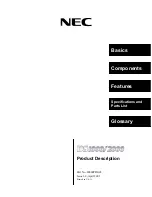
Pulling the dolly empty
When empty, the dolly is likely to bounce around
behind the motorhome. It is advisable to reduce the
tire pressure by 15 psi to help alleviate bouncing and
vibration. Be certain that the tires are reinflated to the
correct pressure before loading a towed vehicle.
Reduce the tire pressure when towing the dolly
empty. If the tire pressure is not reduced, as de-
scribed above, the dolly will bounce and vibrate
excessively. The dolly ramps and/or other compo-
nents may be cracked or otherwise damaged.
1.
The steering pin must be inserted when towing an
12
USING YOUR TOW DOLLY
empty dolly.
If the steering pin is not in place, the tires can
catch and turn sideways, which may cause a loss
of vehicular control, resulting in property damage,
personal injury or even death.
2.
The ramps must be locked in the up position.
3.
The coupler must be secured.
4.
Safety cables and wiring must be attached to the
motorhome.
5.
Before towing, verify that the lighting functions cor-
rectly on the dolly.
MAINTENANCE
1.
Torque all nuts and bolts according to the ‘Bolt
Torque Chart' on page seven. Check and maintain
torque every 3,000 miles or six months.
2.
Steering stabilizer — Check and maintain every 3,000
miles or every six months — Lubricate the shaft of the
steering stabilizer with a few drops of oil. This allows
the stabilizer to operate smoothly and helps prevent
corrosion. If the dolly will not be used for long periods
of time, swivel the wheels to compress the steering
stabilizer. This will force the shaft into the stabilizer,
helping to prevent rust and corrosion.
3.
TieDown ratchets — Check and maintain every 3,000
miles or every six months — Use a drop of oil to lubri-
cate the moving components of the ratchets. Do not
over-lubricate — excessive oil will attract dirt and debris,
preventing the proper operation of the ratchets.
4.
TieDown
™
straps — Check and maintain every 3,000
miles or every six months — Inspect the straps, hooks
and adjustment buckles for any damage or excessive
wear. Promptly replace the straps if they are damaged
in any way.
5.
King pins — Check and maintain every 3,000 miles
or every six months — Lubricate the upper and lower
grease fitting on both king pins with wheel bearing
grease.
6.
Tie rod ball joints — Check and maintain every 3,000
miles or every six months — Lubricate the grease fitting
on the two tie rod ball joints.
7.
Accu-Lube
™
hubs — Lubricate every time before you
tow. Lubricate and check before initial operation:
1. Remove the rubber plug.
2. Insert the grease gun into the grease fitting.
Note: do not use air-powered grease guns.
3. Pump grease until old grease comes back out
the front.
4. Remove the old grease and re-insert the plug.
8.
Coupler adjustment — Check and maintain every
3,000 miles or every six months — If the coupler does
not properly engage the ball, simply tighten the lock
nut. (Do not overtighten the nut, or the lever will not
lock.)
9.
Tires and alignment — Check and maintain every
3,000 miles or every six months — The axle was preset
at the factory with zero camber, 8º caster, and 1/32" -
1/16" toe-in. If you notice unusual tire wear, have an
alignment shop verify the axle settings. Tires should
be inflated to 50 lbs. psi; under-inflated tires will have
excessive wear.
As with any vehicle, it is possible to knock the axle
out of alignment by hitting curbs, running over pot holes,
etc. As such, the alignment is not covered under war-
ranty.
Note: when the axles are changed from narrow to
wide or wide to narrow the dolly must be realigned.
See “Alignment instructions.”
10.
Problem: The tow dolly wanders; doesn’t track
well.
Solution: a) Check the alignment of the tow
dolly.
b) Check the hitch ball height. It
should be between 17" - 19". See
“Before loading the dolly.”
c) Check for uneven tire wear that can
cause tracking problems.
Problem: The bed won’t easily tilt for loading or
unloading.
Solution: The bolts securing the stabilizer bars
are too tight. The bolts must pivot for
the bed to tilt. (see “Final assembly”)






































